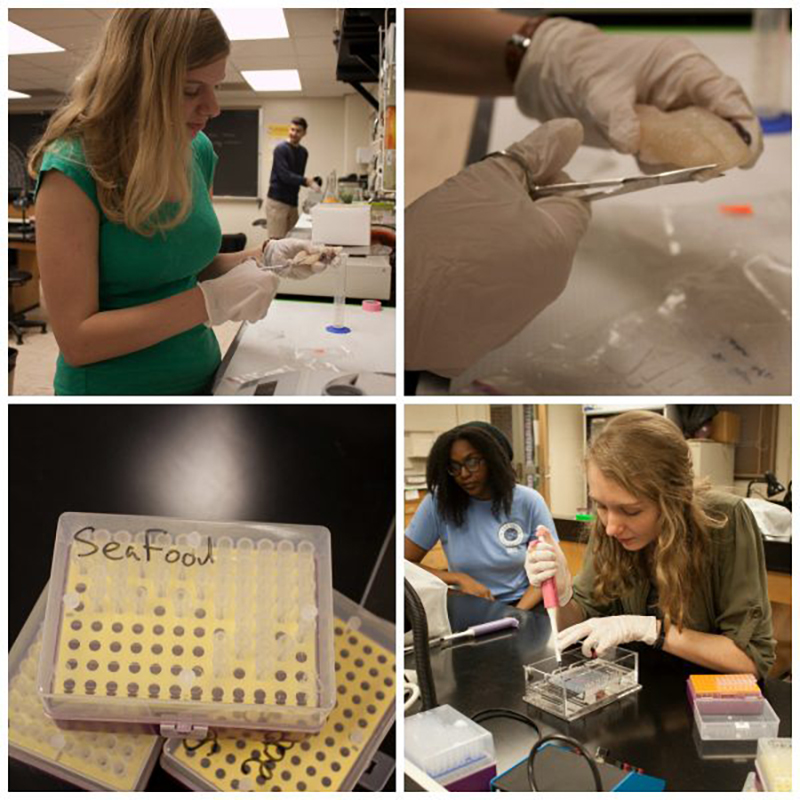
Innovation in the Field
Students Examine Seafood Mislabeling in Pilot Research-Intensive Course
In the Spring of 2016, biologists John Bruno and Blaire Steinwand linked together molecular biology and marine ecology in their new course Seafood Forensics. Students set out to quantify seafood mislabeling using DNA barcoding technology and to discuss the impact that it has on human health and marine ecosystems.
For the pilot CURE (Course-related Undergraduate Research Experience) course, students were immersed in the real culture of science, characterized by scientific ways of thinking, behaving and working. Students designed projects based on novel questions, they learned from failure and they benefited from collaboration.
Some students in the course talked about their experiences in this interview:
Q: What was the purpose of the Seafood Forensics course?
A: Mohit Chandi, sophomore biology major: This class was an introduction to research, where we learned the fundamentals of research, the protocols behind DNA extraction, and we used scientific methods to do an independent research project on seafood mislabeling. It’s been shown in literature and previous studies that seafood mislabeling is a huge problem in the U.S. and around the world. If you go to [a local grocery store], and you’re buying one type of fish, it might not be the type of fish you think it is.
Q: Why is the issue of seafood mislabeling important? How does this impact the consumer and the fisherman?
A: Kylie Lawrence, sophomore biology and chemistry major: A lot of the academic papers we read had to do with the social implications of seafood mislabeling, like in the seafood industry in Asia, for example. Basically they keep people on these boats for years at a time. Because they can take a while to get back to land, the fish they catch are of unknown origin. So when they’re sold to big companies, they can change it to whatever they want. So it’s really hard to determine sometimes where the point of mislabeling happens — whether it’s at the point where the fish is caught or when it’s bought by a big company or when it’s sold to a [grocery store or other food establishment.] It also comes down to health issues, for example, some fish have higher levels of mercury, and for pregnant women, that can be a big [concern].

 JOIN OUR MAILING LIST
JOIN OUR MAILING LIST

